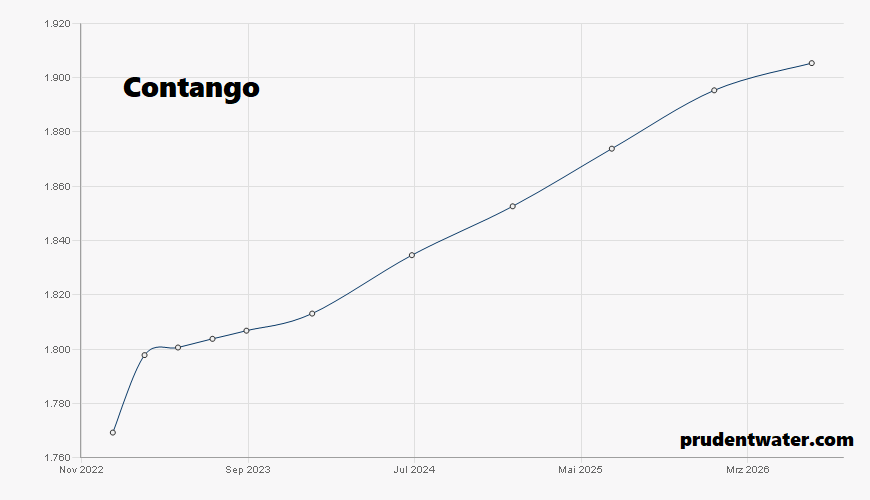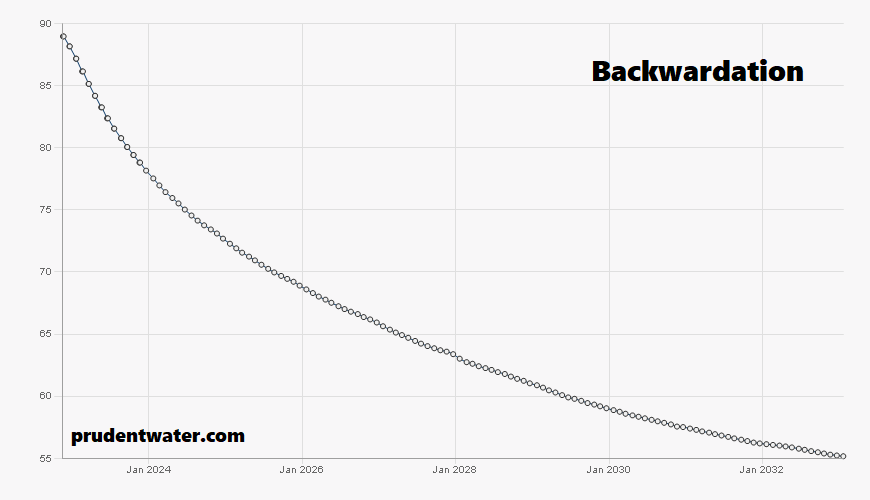The forward curve is used as a method to determine and graphically display the futures contract price development of a commodity on the basis of current futures market prices. The relationship between different prices of the same commodity due to different maturities of futures contracts is shown in the form of a curve. If the futures price curve is rising, it is referred to as contango. If, on the other hand, it is falling, it is called backwardation. The forward curve is formed by linking the prices of different futures maturities of a commodity. In commodity trading, the forward curve is an important indicator for the futures price development of a commodity.


The important thing to know for forward curves is that they are not based on forecasts or speculations, but are calculated exclusively on the basis of current and hourly market prices. However, this does not mean that the price of a commodity determined by the forward curve for a certain date in the future will also be quoted at this price on the spot market at that time. The forward curve merely indicates the current price development of the underlying commodity and thus what it would currently cost to secure delivery of a certain commodity today at a certain date in the future. This price, which has already been secured in the present for a commodity whose delivery will not take place until a certain time in the future, is called the forward price. By the actual delivery date, the spot price may have changed again, which it does normally. However, the purpose behind this is that the buyer of the commodity can calculate with an already fixed purchase price and does not have to buy later on the spot market at the then current and still unpredictable price.
Forward Curve as an Indicator for Roll Gains or Roll Losses
In addition, the forward curve provides information about possible profits or losses when rolling a maturing futures contract into the next contract, since futures contracts have finite expiration dates and must therefore be rolled (replaced) at periodic intervals. Rolling in general refers to extending the maturity of a futures contract by closing the initial contract and opening a new longer-term contract for the same underlying asset at the then-current market price. Rolling a futures enables the trader to maintain the position beyond the initial expiration of the contract. If there is contango then, there is a rolling loss, but if there is backwardation, there is a rolling profit for the investor.

